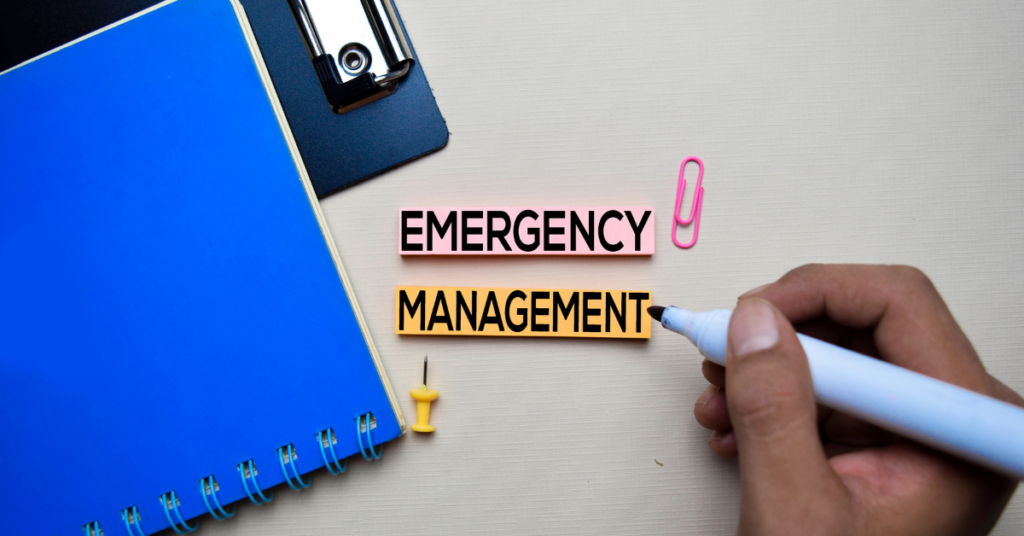What is Emergency Management in Business? All You Need to Know

Let’s begin with a simple question—what is an emergency? Broadly speaking, emergencies involve unforeseen events occurring naturally or due to human/technological error that can disrupt our natural way of going about things. Emergency situations can come in any form: it could be natural calamities, such as the recent flash flood in Sikkim, the Bhopal gas tragedy that was the result of technology and human error, cyberattacks meant to cripple a business or the COVID pandemic. In a country like India, which is prone to various natural disasters due to its geophysical position, it is best to know how to prepare for an emergency. This blog discusses the various facets of emergency management that play a crucial role in navigating and recovering from the effects of disasters.
What are the Key Components of an Effective Emergency Management Plan?
1. Prevention
Remember the old saying that prevention is better than cure? The same goes for emergency management, where prevention is a key component. To begin with, it entails identifying potential hazards and requires organizations to take proactive measures to avoid or offset their impact. Moreover, training and awareness programs organized at regular intervals help employees become more aware of risk. This, in turn, allows them to act promptly in their hour of need. Additionally, the preventive measures should necessarily include stringent policies and adequate techniques for risk assessment. Together, these efforts significantly minimize the likelihood of emergencies, safeguarding the organization and its stakeholders.
2. Mitigation
Mitigation focuses on lessening the severity of emergencies. First, businesses must conduct a thorough risk assessment. Then comes the implementation of safeguards to reduce vulnerabilities. Furthermore, infrastructure improvements are often necessary to withstand potential disasters. Equally important, mitigation involves updating emergency plans regularly. Hence, mitigation strategies ensure business continuity, even when faced with unforeseen challenges.

3. Preparedness
Preparedness ensures businesses are ready to respond efficiently. Organizations must, first and foremost, develop comprehensive emergency plans. Next, they conduct drills to test these plans. Additionally, assembling emergency supplies and resources is crucial. Thus, preparedness enhances a company’s ability to maintain business continuity during and after crises. Moreover, training employees in crisis response roles is essential. Preparedness equips businesses to handle emergencies confidently and effectively.
4. Response
While robust prevention policies, a mitigation strategy, and preparedness form the first line of defense in emergency management, the next step is the response. One can be prepared for a disaster, but when it actually hits, how well one navigates the crisis depends greatly on the tactics deployed in response. The right response in times of disaster, therefore, is imperative in emergency management. That can only be possible by remaining calm and acting fast. First, businesses must activate their emergency plans. They should prioritize employee and customer safety. Furthermore, communication channels must remain open and clear. Thus, an effective response minimizes harm and facilitates swift action. Additionally, coordination with local emergency services is also vital.
5. Recovery
Recovery focuses on restoring normal operations. Initially, businesses assess the damage and prioritize recovery tasks. Then, they repair infrastructure and resume services. Moreover, supporting employees and customers during this time is crucial. Thus, recovery efforts aim to ensure disaster preparedness for future incidents. Additionally, learning from the incident improves the emergency management plan. Recovery is the final step toward resilience, enabling businesses to emerge stronger from adversities.
ALSO READ: Top 10 Benefits of Online MBA Programs in 2024
How Can Businesses Ensure They are Prepared for a Wide Range of Potential Emergencies?
1. Assessing Local Threats and Risks
Firstly, businesses must understand the specific threats their locality poses. This step necessitates researching local hazards, consulting authorities, and measuring risks specific to the business’s location. Remember how Reliance’s Jamnagar Refinery stood unharmed during the Gujarat earthquake in 2001? It was because Dhirubahi Ambani was aware of the local risks and, hence, invested heavily in building extremely strong foundations for his Jamnagar refinery, which ultimately proved to be a wise decision. Furthermore, identifying vulnerable assets and a strong network with local enterprises is essential for disaster preparedness. Hence, to be prepared for what may befall it, a deep understanding of local risks is necessary.
2. Crafting a Disaster Recovery Plan
Crafting a detailed disaster recovery plan is essential. This can be achieved through risk assessment, which outlines actions for various emergencies and includes vital contact information. Designating an alternate operational site and ensuring the plan’s accessibility in multiple formats is paramount. A comprehensive disaster recovery strategy is crucial to emergency management.
3. Identify Essential Operations
Identifying essential operations within the disaster recovery plan is another vital step. Planning for scenarios such as network outages and ensuring you have detailed network documentation can significantly mitigate risks. Moreover, establishing remote access capabilities ensures business operations can continue from anywhere. Therefore, pinpointing and protecting mission-critical operations is fundamental to emergency management.
4. Establishing Effective Communication Strategy
A well-established communication strategy is indispensable in a crisis response. This involves maintaining an updated emergency contact list and deciding on stakeholder communication methods. Additionally, organizations must ensure that their employees are well-versed in the communication plan and are part of the emergency management effort.
ALSO READ: Top 10 Business Trends 2024 That Will Dominate the Indian Market
5. Focusing on Safe and Accessible Exits
Ensuring that exits are accessible and clear in emergencies is critical for safety. Planning for lockdowns during specific threats and collaborating with security experts to identify evacuation routes are essential measures. Therefore, maintaining safe and clear exits is a key component of disaster preparedness and crisis response.
6. Securing Data
As the world is tuning into the digital realm with each passing day, the threats to which this domain is susceptible are becoming increasingly sophisticated. For instance, according to a report published in India Today, India’s financial sector witnessed over 1.3 million cyber attacks in the first 10 months of 2023. Given this situation, securing your data against cyber threats is imperative. Implementing a robust data backup strategy, including offsite backups, is crucial for protecting against data loss and ensuring business continuity.
7. Visual Access Through Security Cameras
Security cameras play a key role in effective emergency management, offering visual evidence during incidents. Therefore, ensure cameras are correctly positioned and functioning as a comprehensive security measure.
8. Demarcating Illuminated and Secure Premises
A well-illuminated and secure premises deters several potential threats and ensures safety during emergencies. Regular maintenance of outdoor lighting and secure entrances boosts confidence and safety. Therefore, prioritizing a secure environment is crucial for emergency management.

9. Invest in Safety Equipment and Emergency Drills
Investing in essential equipment and conducting regular emergency drills are mandatory for effective disaster preparedness. This investment ensures that all the equipment necessary for managing a crisis is functional and that staff are familiar with the emergency protocol.
10. Collaborating With Emergency Strategy Experts
Finally, collaborating with professional security services for emergency management planning can offer organizations valuable insights. This, in turn, enhances the organization’s preparedness for various threats. Such a collaboration is vital in emergency management.
ALSO READ: What is Power BI? Understand its Architecture, Features, and Uses
What Role do Communication and Coordination Play in Emergency Management for Businesses?
Communication and coordination are the two pillars of any effective crisis response strategy, crucial for business continuity. When an emergency strikes, having a strong network for disseminating relevant information to all the stakeholders—from employees, customers (if necessary), and emergency responders—proves essential for an unhindered and swift recovery effort.
On the other hand, coordination ensures that these efforts are synchronized. It would save time, effort, and resources by helping stakeholders avoid duplication of work. Together, these two components facilitate a unified response strategy that enhances disaster preparedness, minimizes the impact on operations, and, in the long run, helps business continuity. Effective communication and coordination also bolster risk assessment processes, allowing businesses to adapt and respond to emergencies swiftly and effectively.
ALSO READ: How to Become a Management Consultant?
If you want to learn more about emergency management and the different components and steps it entails, consider joining Emeritus’ online business management courses and ensure your organization’s safety during moments of crisis.
Write to us at content@emeritus.org





